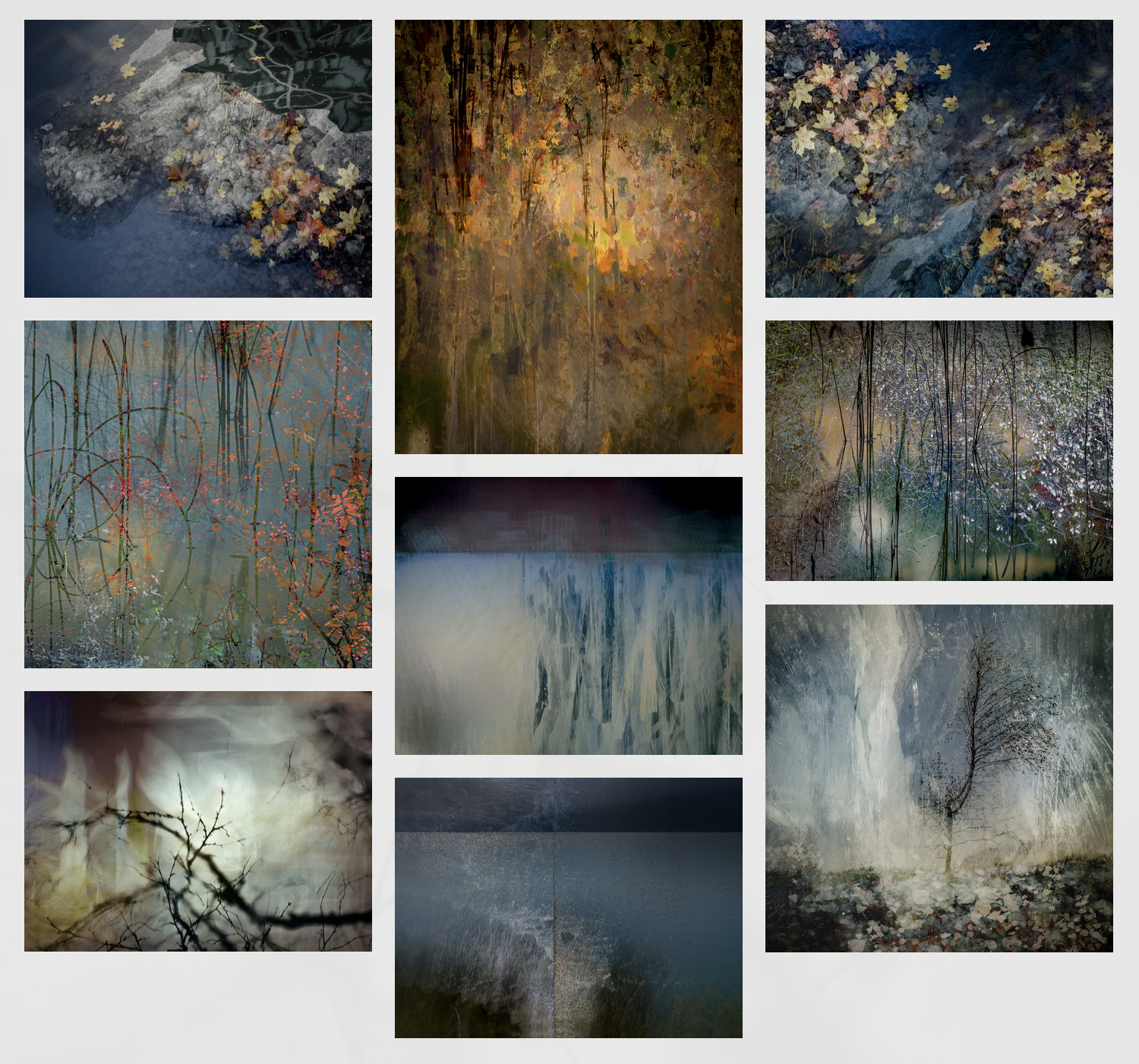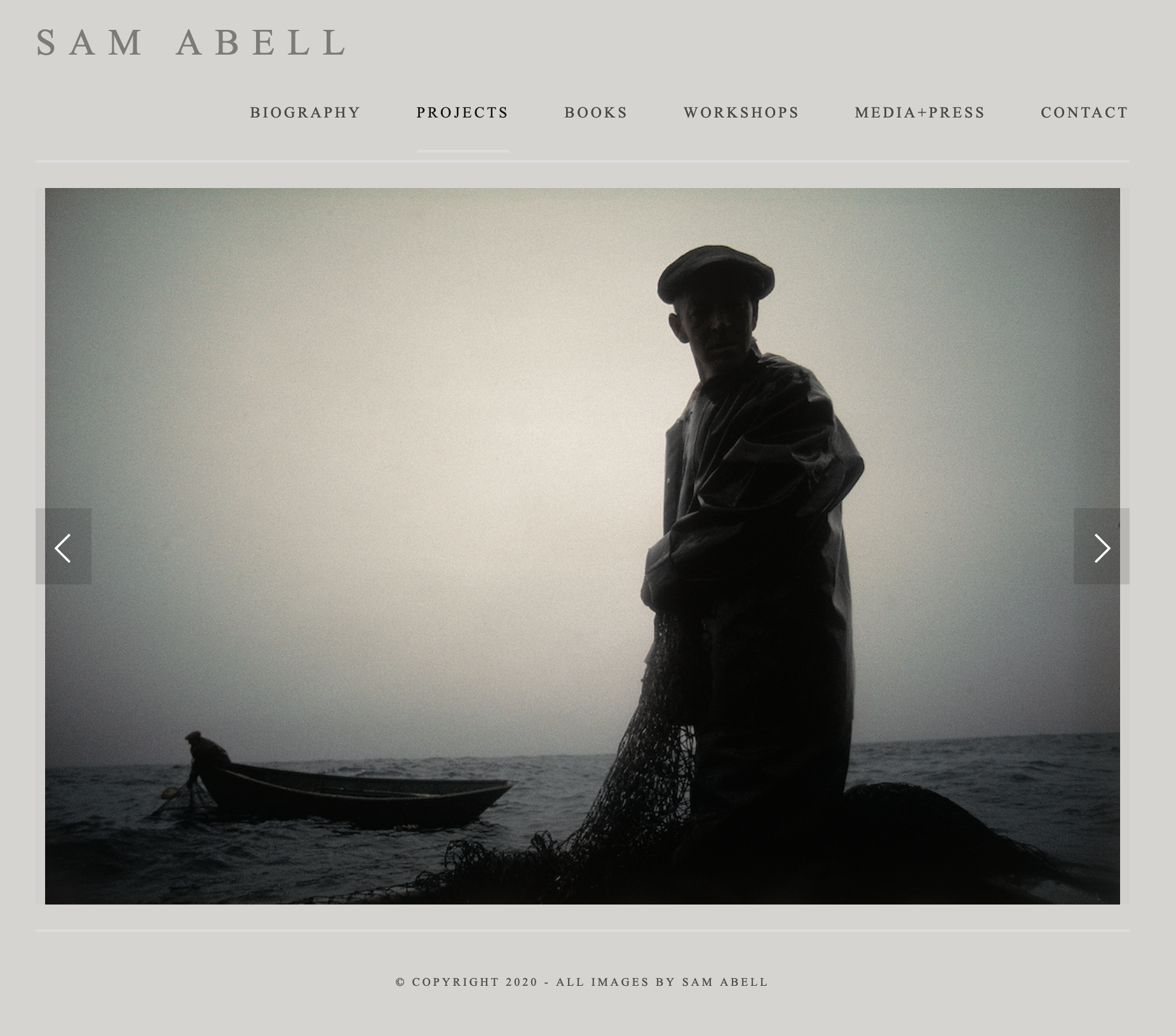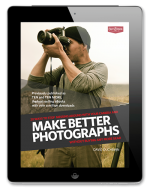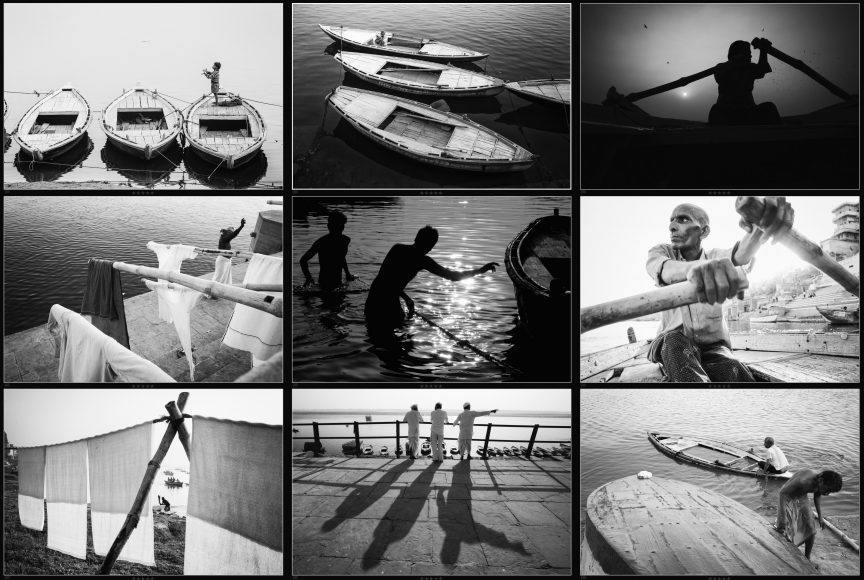The enigmatic Cat in the Hat once told us that “there is no one alive who is you-er than you.” The less fictional Miles Davis reminds us (as I tried to do two weeks ago in this article) that this is true but that it takes some time to arrive at, that it can take a long time to play, or—as a photographer—to shoot like yourself.
But how? Personal projects, or photographing in series or bodies of work, can help you get to be the kind of photographer who “shoots like yourself” in a more focused way than any other approach I’ve ever come across. Sure, no one is you-er than you, but does it show in your work? Whether it does or not is a result of the choices you make, and I believe bodies of work help you get there.
A body of work is more than a single image. And it’s more than just a collection of single images, which for many photographers is often just a compilation of greatest hits more than it is a cohesive set of images intended to say (or explore) something specific.
A body of work is not “here are the 24 best images I made last year,” so much as it is “here are 24 photographs about circus clowns (or, you know, whatever).”
A body of work hangs on a theme or an idea. It has a through-line, and it does in multiple images what one image can’t. It says more. And over time, these bodies of work become part of the photographer’s voice. They are a way to help discover that voice and a way that voice gets expressed.
Shifting your focus from making single images—which is necessary in the beginning as you learn your craft—to making bodies of work instead is a huge step forward for most photographers.
It was for me. It changed everything for me and is one of those milestones I look back on and see as a turning point.
The pursuit of bodies of work forces us to be more intentional and less purely reactive; it allows us to take more time and become more thoughtful. Bodies of work allow us to see more and to say more. If the single image is a great lyric, a body of work is the whole song, or even a great album. It’s a bigger experience.
Bodies of work force us to go deeper and allow us to make the kind of photographs that can only be made from that depth of familiarity with our subject. That depth gives us more to say about a subject and the kind of knowledge that allows us to approach the subject more creatively to make not only a strong series, but stronger single images.
Learning to make bodies of work will help you learn to “shoot like yourself.”
To give you some inspiration and a sense of what I mean, I want to introduce you to three photographers who create bodies of work or who work in series really well. Because of this longer exploration of ideas and themes, these photographers have created work that is distinctly their own. Out of this commitment to series, work has emerged not only stunning single images but visual voices that are uniquely their own.
Valda Bailey

Valda Bailey is an English photographer who works in the abstract and the expressive. I find her work deeply moving, and I want to suggest you look at and respond to this series called Lakeside ( shown above). The through-line is clear; it contains only nine images, but look how well they work together to express that one simple idea. She doesn’t hit the same note over and over but instead creates a rhythm.
Valda’s series Blossom Blizzard does this as well. A clear theme is expressed better in eight images than it could ever be in just one. And all of her work has a cohesive aesthetic. Even just the way Valda uses colour has a harmony to it; these are intentional decisions and give Valda what we would recognize as her voice. (Updated: between writing this and posting it, Valda’s website is being updated. You can find her portfolios here but specific links above might not work.)
Sam Abell

Sam Abell is an American photographer whose work has appeared frequently in National Geographic. There’s a good chance you already know his work, though you might not know his name. In Sam’s context, a body of work is called a photo essay. It’s a series, but it has more than just a thematic through-line; it includes a narrative thread as well. Take a look at his galleries to get a sense of how all of his series have a similar (but not identical) aesthetic or look. Specifically, take a look at his Newfoundland series.
Like all the photographers who work for the famous yellow rectangle, Sam doesn’t just show up to a place and make a few images. He lingers. He gets to know the place. He doesn’t think only in single images but in how they can all work together. This approach forces him to make more choices than single-image work does, and in the end—while his series do work together really well—his single images are also stronger for it.
Edward Burtynsky

Edward Burtynsky is a great example of a photographer whose voice is recognizable in both what he says photographically and how he says it. He has a voice you can’t mistake for anyone else. Burtynsky photographs industrial landscapes—the hand of man on the environment. He’s photographed salt pans in India, quarries in Italy, massive log booms in Canada, and ship breaking yards in Bangladesh, among many other subjects. All his work hangs on this one larger theme, and within that, on smaller themes like Water, Oil, or Quarries. And all of it is staggeringly beautiful.
Look at a handful of Burtynsky prints, and you’ll learn to recognize his work anywhere. His use of pattern, scale, and colour has a harmony to it that’s impossible to miss. See more of Burtysnky’s work on his website here or in any of his extraordinary books.
Having your work recognized is not the point. The point is making stronger photographs because you’ve chosen to go deeper on fewer subjects and to make intentional choices about what is and isn’t “you.”
As a photographer, there’s a time to be all over the map, but eventually, you will benefit from making stronger choices about what “shooting like yourself” really means. And though it may sound like it, this isn’t creatively confining—quite the opposite, in fact. The freedom that comes from working within the constraints of a personal project is extraordinary. Knowing what is and isn’t “your jam,” as they say, is liberating. Challenging, too, but that’s where flow has always come. That’s where creative people have always done their best work.
One of the highest compliments I think any photographer can receive is, “I knew that photograph was yours the moment I saw it, even before I saw your name.” That’s when you know you’re shooting like yourself.
That’s when you know you’ve found your voice. Although, for me, this isn’t something I found or “discovered,” but the result of work in which I made choices that increasingly felt like me. I believe that voice is chosen, and committing to shooting bodies of work has made me clearer about which subjects fit me and which do not, and it made me much more aware of my visual tastes and preferences.
What do you think? Have you noticed how some photographers work in series to explore a theme, story, or idea? Do you have a favourite photographer whose work is so “them” that it consistently stands out as theirs? Have you tried working in series and found that your work gets better and more “you”? I’d love to hear from you in the comments below.
For the Love of the Photograph,
David

PS – Want more like this? I send these articles out every two weeks to photographers around the world who want to improve their craft and explore their creativity and I’d love to include you. Tell me where to send it and I’ll send you a copy of my best-selling eBook Make Better Photographs, as well bi-weekly articles, first-glimpse monographs of my new work, and very occasional news of resources to help you keep moving forward in this craft we love.
“Each and every one of your emails inspire and motivate me to want to jump right out of my chair away from my computer and shoot for the love of it . Thank you David.” – Millie Brown


Comments
My photography journey has been slow but fun. I was initially hesitant to be in your community because I’m such a beginner, but I quickly realized how welcoming, accepting and encouraging you are. Plus I learn so much from everything you write and do (not just about photography). I’ve done two series so far and I absolutely love the constraints. I shoot food. I discovered that I’m so inspired by my own work when I attempt a series versus a single image. It really gives me a place to practice without being distracted by too many options. What a joyful discovery for someone who can barely find 3 good images out of thousands (for now). Anyway, thanks so much for the work you do. I’ve learned so much from you. Even when I drop the ball on the courses and shooting, I know I can come back to it and I’m compelled to come back to it. I’ve finally gotten back to Beyond the Shutter. You got me over the intimidation of Lightroom. I was so overwhelmed by it. Now I know that I have so much fun ahead of me. Thanks again!
Thank you so much for that, Michele!!
I think Voice is so important and too often overlooked by new and experienced photographers. I love the concept of “shooting like yourself.”
Yes! Thanks for that Molly. Voice is overlooked, but so is the idea of individuality. Imagine how much we lose in our art, our expression, even our self-discovery when we’re more worried about what others think than about being truly ourselves. I think voice is a beautiful, and helpful, metaphor.
Always inspiring and invigorating, David. This one and the previous one (on “voice” also) have had me ruminating for days. I gather then it’s fair to say that the images collected into “body,” while more intentional than I may have previously thought about them, need not come from a single, focused time of dedicated work, but can accumulate (again more or less intentionally) over time with various interruptions by other projects. And I’ll bet that some images from a while ago may show themselves unexpectedly appropriate to a later project. I sense that in some of the examples, esp. by Abell and Burtynsky. Would that be generally so?
Thank you for this wonderful, inspiring article.
Superb blog, David, as always.
And this one hit home. Been way too “all over the place”. Man Without much of A Voice. If only there was time to change…
Love the amazing work of Alda Bailey. Wow!!!
Jan
You are so right. I have been trying to find my bodies of works. Not really sure where I want to be. Thank you
I’ve done projects for a couple of years now (3 finished, 2 in progress). All of them evolved around specific places, so it’s more like Joel Sternfeld’s or Jem Southam’s approach to projects. For me, photography is a tool for exploration, for making sense of the world. I think the interesting question is “why is this particular place interesting – for me?”. So possible answers reveal something about the place and at the same time about me.
One risk with this approach, however, is to over-think your photography. In order to define a project, we resort to words and conceptual stuff, and all too often discard “soft matter” like visual appeal and beauty. I think it is much harder to assemble a cohesive project based on visual appeal, aesthetic properties and poetic quality, like Valda Bailey does.
Excellent point on constraints bringing freedom. I can’t explain why this is, because the two are mutual opposites, but it is also my experience.
Love. Love. Love.
🎯
What are your thoughts about presenting “body of work” photos as a typology rather than individual prints?
Hi David,
I try to do a project every year. Finally I arrange the best of the images in a book. My problem is, thought it is not a problem but something that’s worrying me, I always ends up with so many images. I find it hard to narrow it down to just 20 of 30 instead of 70 of 90 . Most of the times I start selecting them from a few hundred. And I am really able to “kill my darlings” when the don’t fit in. Maybe my kind of images are not ment to narrow further down. I am not sure where to go from here. Beijing satisfied sounds good for a while but when I start a new project I always think this time I let only 10 or 20 past the final selection. But so far I have not been able to do that. At this very moment I’m thinking of a new project. About birds in the neighborhood city or shore. I have not decided yet.
Idon’t have a website. My latest book is about pets in the city. The ones who are at home. I photographed them from the outside in. To show how the fit in their homes.
Hi Tea,
I couldn’t help but jump in here. David has a course called Beyond the Shutter and it is all about editing your body of work (not editing as in post production although he touched on that too). It’s more of a means of organizing and curating your photos. It’s really thorough and valuable. I highly recommend it. I’m not a personal friend or paid to say this. I just truly think it might help you.
Like so many of your articles, this one in particular is timely and inspirational. In recent months, I’ve embarked on a few mini projects that will take me somewhat out of my comfort zone, while hopefully staying true to an aesthetic I have been working on. I feel that the process of visual storytelling, along with my own voice, will be a continuous journey. After having recently experienced Edward Burtynsky’s “In the Wake of Progress” exhibit, I realize more and more that the visual storytelling is stronger with a cohesive series of images; even stronger with a solid aesthetic. We are all works in progress. Thank you, David.
Hi David
“…for me, this isn’t something I found or “discovered,” but the result of work in which I made choices that increasingly felt like me. ”
For me at least I recognize that those choices will continue evolve over time as will the kind of work I do. I doubt anyone will look at any of my work and say that it came from me. The final result of the images I work with today are different than the ones I did a year ago and will be different from the ones I work with a year from now. And I’m OK with that.
On a different note, I have almost completed your “Compelling Frame” mentor course and am thoroughly enjoying it. With my meager resources I cannot afford a workshop… but taking that course is the next best thing. I plan on letting it settle in for a month or two then will be going through the course again. I also look forward to and enjoy your weekly email. Thank you so much for being so generous with all of us.
I’m finding myself in a similar experience of changing as I grow. I balk at the idea of having easily identifiable photos. To me it seems limiting and constricting. I like to experiment, try new ideas, sometimes just take “snapshots”, but I’m always looking for what appeals to me. I think that’s what makes my photos reflect who I am. I guess I’m afraid of being “pigeon-holed” as many artists are. A popular singer who switches from pop to country music, for example, is derided or scolded by their fans. Do photographers face the same criticism when they stray from their vision?
That being said, I send out daily “blogs” that are on a particular theme for the day. But, the next day, I may post something completely different, while keeping each blog as a single work. I process my photos very much the same, however. Perhaps that is my ‘vision’?
It’s good to stop and take stock once in a while. Thanks, David, and the commenters for helping me do this.
I like this comment, Wally: “A popular singer who switches from pop to country music, for example, is derided or scolded by their fans. Do photographers face the same criticism when they stray from their vision?”
I think the answer is “yes, sometimes they do.” But that’s about audience and expectation. I think if Springsteen were to suddenly go “country” he’d still be 100% Springsteen. He’d have the same voice, sing about the same thing. When Picasso shifted gears from one phase to another he was abandoning the mental pigeon-holes his audience had for him, but was still unmistakably Picasso. His tastes and preferences went with him as he experimented. Sure, this idea of voice can be limiting or constricting, but it doesn’t have to be. That constriction, for some, is as much in what we do with these ideas as the freedom others find there is. It’s what we do with it that matters. It’s the questions that matter, and if these questions lead you to better express yourself (or even to discover yourself) then that’s a good thing!
Gear, , gear and more gear, workshops, magazines …..so much invested into a hobby and yet it turned out the lightbulb moment for me was listening to a discussion between yourself and Zack Arias about creating bodies of works. Thank you!!
That’s the best. Thank you for that, Caroline. If you see this I’d love to know where you found that conversation with Zack. Do you have a link you can share with us?
From memory it was from the Making the Image course you ran back in 2020. You discussed a photographer called Alain Laboile too. Hope that helps!
Fantastic post, this is just what I am moving toward, creating projects because they mean something to me and I am finding my own voice through them.
Fantastic, Kim! Keep at it! The magic is in the discovery.
David, you are spot on. Just as we don’t speak in single words (except to swear “#&!@”), in photography there is syntax and vocabulary enriched by the connections and contrast of a flow of visual ideas. I was fortunate to participate in a workshop led by Sam Abell in which he underscored the importance of this. Furthermore, Sam shared his process that precedes the capture of a single image—his rejects. But best, he showed and described the relationships developed in the final essay and why the rejects failed to advance them. They failed first as “the picture”; second as a necessary part of the essay. Visual language reveals meaning best in the context of a longer story. Sam’s essays are masterpieces of storytelling. Yours too. Thanks for the wisdom and inspiration.
Lucky man. A Sam Abell workshop is among one of the few I’d move the earth to attend. I love your metaphor about not speaking in single words but in sentences and longer forms. Very apt. Sometimes the single word is all we need, but how impoverished we’d be if that’s all we used.
Your articles just keep getting better and better, or maybe I am hearing and comprehending them better and better. Thank you so much and for the links to the photographers. Please keep gently prodding us to do better. You do inspire me,
Thank you, Karen! It’s an honour to write for you. The prods will continue, I promise! 🙂
Thank you for a very timely article. I’ve been thinking about this recently too. I feel like I need to try this and see what works and what doesn’t, I have a few ideas jotted down 🙂
Happy to help, Tracy!
Good morning David! Just thought you should know this link takes us to an error page that doesn’t work.
“Valda’s series Blossom Blizzard”
Wonderful article by the way! I’ve actually got one that I’m going to put together as a body of work.
Thanks, Stephen. Looks like Valda is updating her website. I’ve added a general link to her portfolios which I’m hoping remains the same.
Another very informative article. I am still trying to find a personal project. Often think I would like to photograph this or that subject for a project, but don’t seem to follow through. However this article has given me the inspiration to start a personal project on the abstract mini landscape- something I have thought of for awhile. My wife is an artist and read this article substituting “photography & photographer” for “art & artist”. An excellent article for any “Artist”,